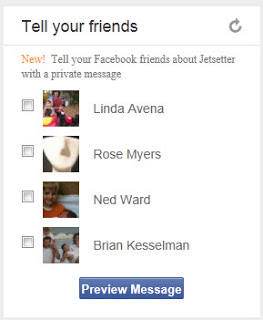Written by Jean Steckler
Steckler eMarketing, Westfield NJ 07090
Companies and brands looking to jump into Facebook have a number of marketing tools to consider. This brief summary provides a quick overview of what Facebook can do for marketers today.
Facebook Like Button
Any product can incorporate Facebook Like buttons which help viewers share information about your products and services with all of their Facebook friends. Marketers need only embed the Like Button and associated code on their own web page.
Facebook Send Button
Similar to the Like Button, the Send Button is posted on the marketer’s product page. Users who click on the Send Button can send specific friends information about your product. It allows your viewers to privately share links from your site.
Facebook Send Dialog
The Send Dialob gives your customers the ability to share a link as a private Facebook message, email or Group post. The Send Dialog is better than the Send button for deep integrations with your brand or product website because it allows you to integrate Facebook messaging into your website’s functionality. For example, Jetsetter.com uses the Send Dialog to list the viewer’s Facebook friends, select which ones to include in their message, and send the message.
Single Sign On with Facebook
If your site requires users to login for access to restricted content or ecommerce, you can offer your viewers to log into your site with their Facebook username and password. Marketers who do this have access to information about the users who use Facebook’s login process:
- Viewer’s basic Facebook information
- Email permission
- Posts to the user’s Wall
Marketers are able to offer special messages or promotions to the friends of those who choose to login to your site with their Facebook username and password.
Facebook Pages
On Facebook, people have profiles – companies and brands have pages. Pages once created with Facebook Markup Language (FBML) can now be created using HTML and iFrames.
Wall updates are shared among everyone who has “Liked” your page by posts to their Facebook home page and Facebook Email.
Leverage Content
You can capture an external blog and post its contents on your Page’s notes. To do this go to the Page Manager > Edit Page > Applications (next to Notes) > Go to Application > Edit Import Settings
Page Analytics
Facebook Insights provides Facebook Page owners metrics around their content.
Additional Analytics tools include:
Facebook Email
Select Page Manager > Edit Page > Marketing > Send Update to send updates to people who have “Liked” your page. Your emails will appear in their “Other” messages folder. Note that Facebook Pages do not currently have an Inbox, and can’t be used to contact individual people directly.
Sponsored Ads
Sponsored ads appear on the right side of a page can target specific demographics which include:
- Country, State, or City
- Age range
- Education
- Work Places
- Activities (such as Outdoor fitness activities, traveling)
- Birthdays
- Business/Technology Interests ( e.g. science/technology, small business owners)
Sponsored Stories
Sponsored Stories present you wall posts in the right column. Sponsored Stories follow the same pricing and scheduling as Facebook Ads. Only people who are eligible to see a News Feed story are eligible to see it as a Sponsored Story. Sponsored Stories are based on stories from your News Feed. The types of stories that can be surfaced include: page likes, page posts, page post likes, check ins, app shares, apps used and games played, and domain stories.
Jean Steckler
Steckler eMarketing
www.Steckler-eMarketing.com
jean@steckler-emarketing.com









Interesting post on tracking the impact of social media on PR: http://www.socialmediaexaminer.com/6-ways-to-track-the-impact-of-social-media-on-public-relations/?utm_medium=twitter&utm_source=twitterfeed